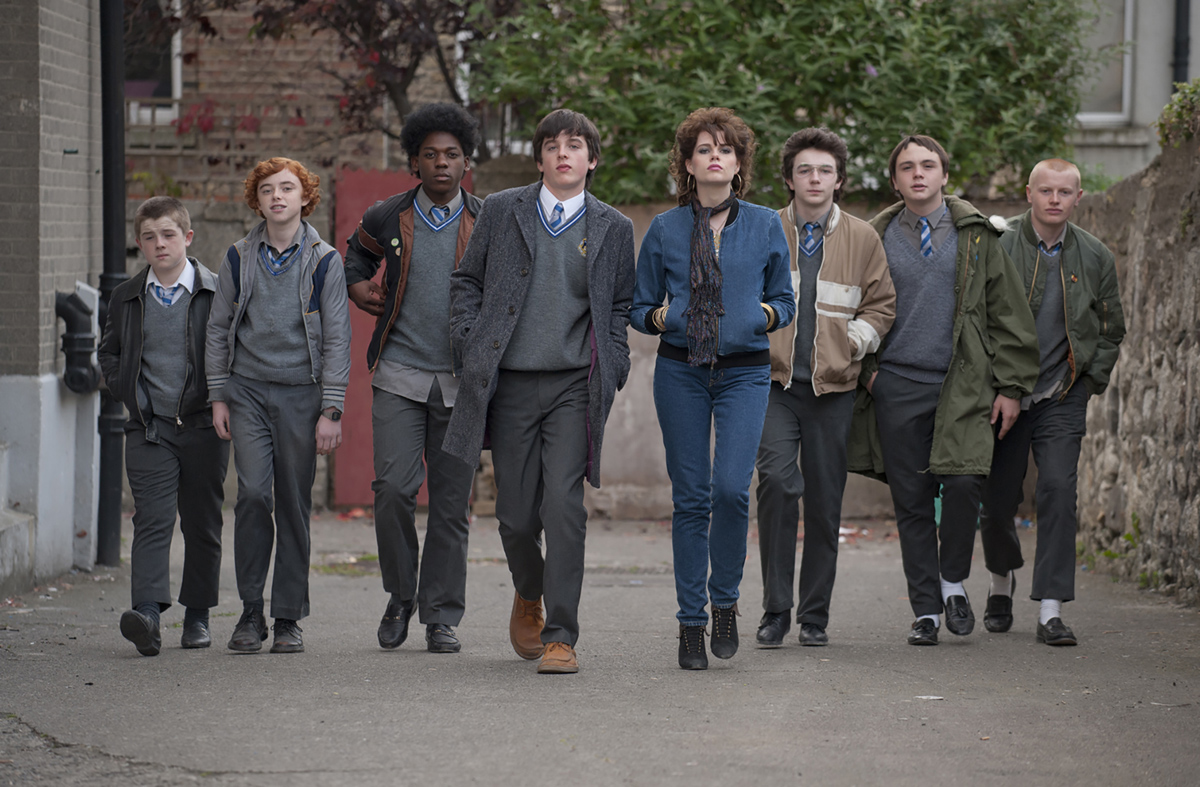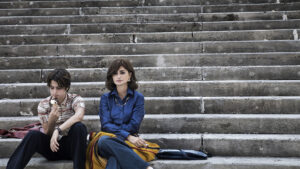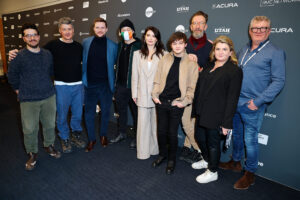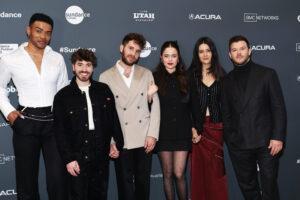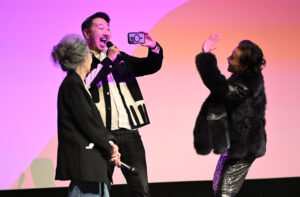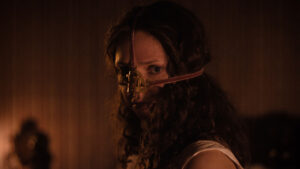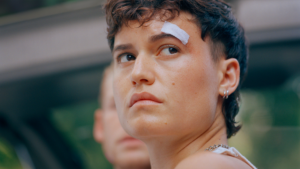“Sing Street” is the second of three movie musicals that writer-director John Carney has brought to the Sundance Film Festival.
By Laura Studarus
How about a film with a side of song and dance? From Sing Street to Blinded by the Light to Hedwig and the Angry Inch, the Sundance Film Festival is no stranger to musicals. Adding a musical element is a surefire way to up the difficulty level of creating a film while also opening the narrative up to a deeper exploration of themes that can’t be told any other way. But the movie musical genre has undergone a good deal of evolution since its first appearance almost 100 years ago.
The first movie musical, The Jazz Singer, premiered in 1927. In addition to being the first talkie (in a brief scene where the main character inexplicably flirts with the actress playing his mother), it was the first time movie audiences were treated to synchronized sound and lip-synched songs. While the film features a ridiculous and racist plot that thankfully has not stood the test of time, hearing actual songs on film rather than from an in-house organ was groundbreaking. Within a decade, Busby Berkeley was teaching us about the surreal realm of leggy showgirls. Another decade later, Ginger Rogers was making a splash with Fred Astaire, dancing backward and in high heels. The movie musical wasn’t just a novelty; it was a full-blown must-see event.
A quick Broadway-to-Hollywood pipeline formed, in the hopes that stories set for the stage would find equal acclaim on the screen. It’s a theory that has led to some of the most widely acclaimed films of the 20th century (The Sound of Music, My Fair Lady, Fiddler on the Roof), edgier favorites (Chicago, Rent, In the Heights), and well… the 2019 film version of Andrew Lloyd Webber’s Cats.
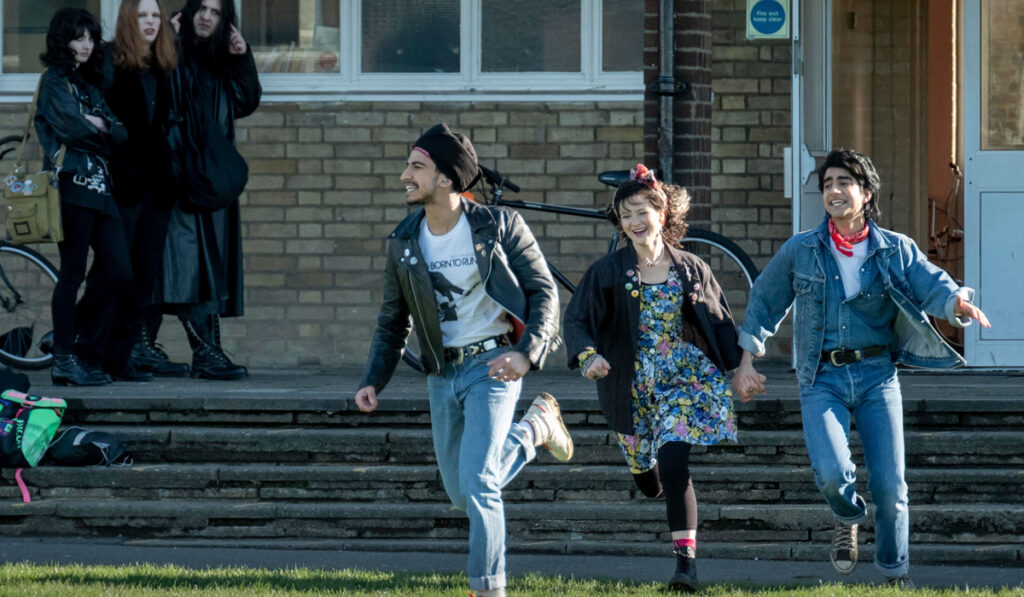
There have been triumphs, see: West Side Story — a movie so nice they made it twice, winning 10 awards at the Oscars in 1962 and another statue in 2022 for Best Supporting Actress. Both The Wall and Tommy have achieved rock opera cult status. And while La La Land might not have won the top prize at the 2016 Oscars (despite accidentally being called first), it was a classic celebration of Los Angeles, where all your dreams can come true.
But no one has conquered the movie musical quite like Disney. From Snow White and the Seven Dwarfs in 1937, which included the greatest tribute to the working man, “Heigh-Ho,” to Encanto and the Lin-Manuel Miranda–penned tune about intergenerational trauma, “We Don’t Talk About Bruno,” music in Disney films feels like a natural extension of the characters’ surreal worlds. Disney’s market share isn’t a surprise. Not only does the company have the budget to secure A-list talent — see the newest version of The Lion King which not only features Beyoncé but inspired her Black Is King companion album — it’s got the resources to keep us in merchandise long after a film’s initial theatrical run.
The formulaic, albeit profitable, Mouse House proliferation might explain some subsequent pushback. The idea of using the movie musical format for something other than squeaky-clean fun isn’t totally new. In 1952, Singin’ in the Rain, a runaway hit literally built from the spare parts of other musicals, proved the power of off-kilter charisma and (for the time) lightly off-color snark (while also giving Donald O’Connor the opportunity to land one of the most memorable backflips in cinematic history). In 1978, Grease kicked off the now-beloved tradition of 30-year-olds playing sexy teens. And of course, no one could forget the 1986 campy doo-wop classic Little Shop of Horrors, about the unstoppable appetite of an alien plant named Audrey II.
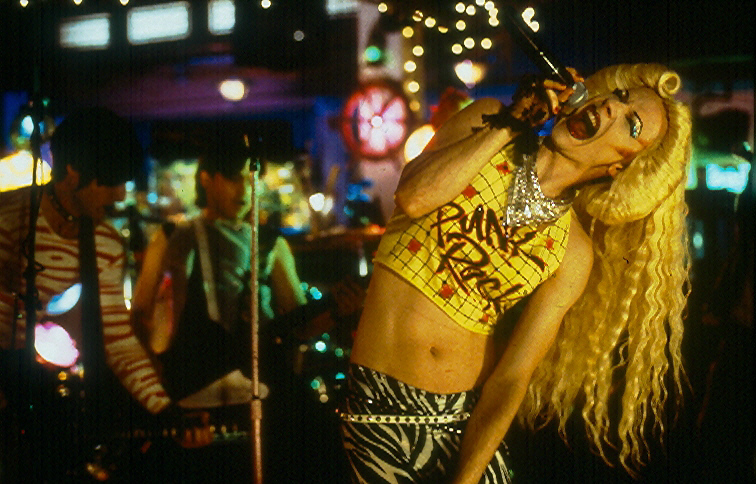
It would be inaccurate to say that the movie musical has been experiencing a revival — IMDb data shows that the number of movie musicals produced yearly have been in a sharp decline since the 1940s. However, the last couple of decades have seen their share of classics. Like The Rocky Horror Picture Show before it, Hedwig and the Angry Inch (supported by Sundance Institute’s 1999 Directors and Screenwriters Labs) became a cult classic by addressing the realities of queer audiences who made many movie musicals a hit to begin with. Lars von Trier’s Dancer in the Dark — winner of the Palme d’Or and a Best Actress award for Björk at the 53rd Cannes Film Festival — employed Björk’s surreal vocal talents to underscore the horrors and inequalities of the working class, creating one of the most disturbing entries in the genre. While Once thrived by giving many of its original performances a more organic appeal, Mamma Mia! repurposed ABBA’s hits and was so popular that it spawned a sequel whose star power only increased with the addition of Cher. And though the Pitch Perfect franchise adheres closely to the jukebox musical format we’ve all come to know, it’s worth arguing that its campy performances are justified by centering the story on a flamboyant a cappella collective who are the center of their own world.
Don’t count the genre out just yet. Recent Sundance Film Festival favorites Flora and Son and L’Immensità indicate that the movie musical might be an increasingly rare phenomenon, but it’s not totally extinct — it’s evolving. Which is a relief. Whether exploring the depths of humanity or the heights of passion, films — and life — can always use a little extra razzle-dazzle.




